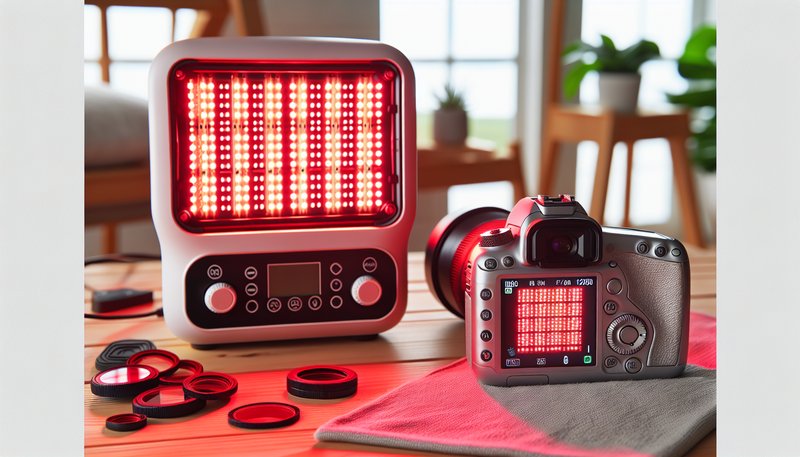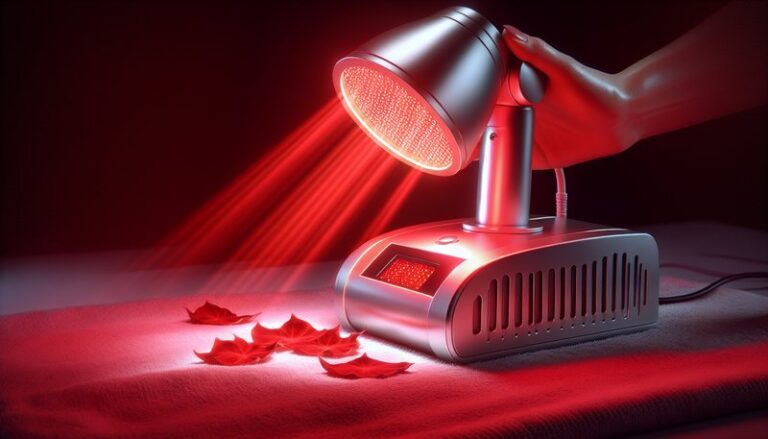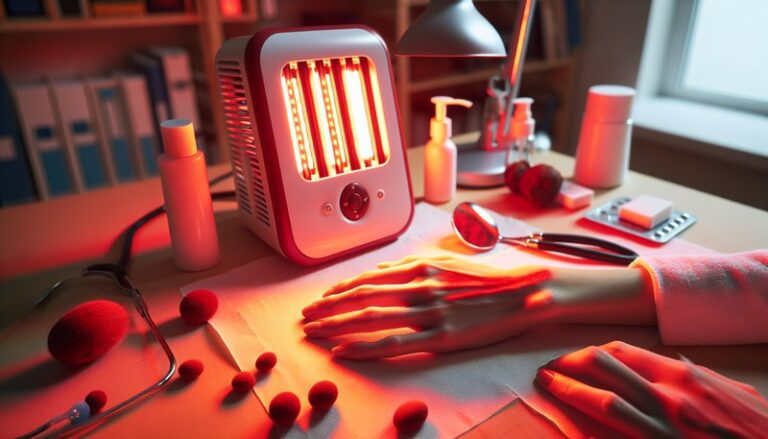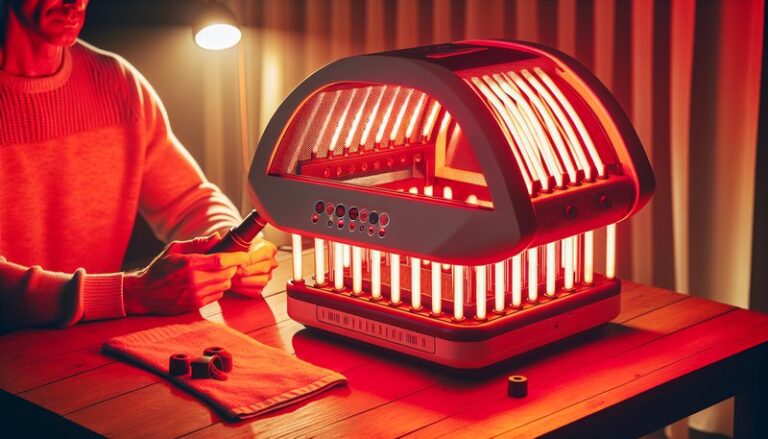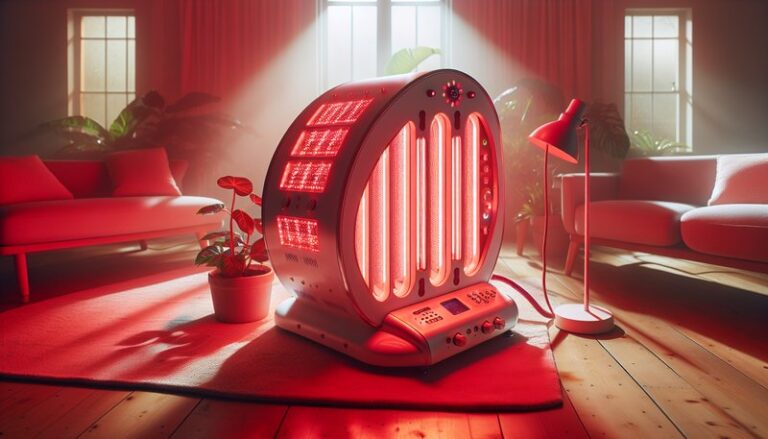Does At Home Red Light Therapy Work?
Does At Home Red Light Therapy Work?
Is red light therapy just another wellness trend, or does it genuinely provide benefits that make it worth considering for home use?
In this article, we will explore the efficacy of at-home red light therapy. We will cover what red light therapy is, its potential benefits, feasibility, considerations to keep in mind, and alternatives available to those interested in this treatment. By the end, you’ll have a well-rounded understanding of whether incorporating this therapy into your routine is a good idea.
Key Takeaways
- At-home red light therapy involves using low-wavelength red light to stimulate healing and improve skin health.
- Many individuals report benefits such as reduced inflammation, improved skin tone, and enhanced muscle recovery.
- While promising, there are considerations and alternative therapies that may also be beneficial and should be explored.
What is Red Light Therapy?
Red light therapy (RLT) is a non-invasive treatment that uses low-level wavelengths of red light to promote healing in the body. This technology, which emerged from research on the effects of light on cells, is believed to activate a process called photobiomodulation. During this process, the light is absorbed by the skin and underlying tissues, resulting in increased cellular energy production and enhanced cellular function.
The therapy can be administered through different devices such as panels, handheld devices, or masks. Each of these applications targets various issues, ranging from skin rejuvenation to pain relief. With an increasing number of at-home devices on the market, red light therapy has grown in popularity for personal use.
What are the Benefits of Red Light Therapy?
The following points explore the significant advantages of integrating red light therapy into your self-care routine.
Enhanced Skin Health
One of the primary benefits of red light therapy is its ability to improve skin tone and texture. Research indicates that RLT can enhance collagen production, leading to diminished wrinkles and fine lines, thereby providing a more youthful appearance.
Reduced Inflammation and Pain Relief
Many users report reductions in pain and inflammation, making red light therapy popular among athletes for muscle recovery. Studies have shown that RLT can be effective in alleviating pain associated with conditions like arthritis and muscle strains.
Improved Mood and Sleep Quality
Emerging evidence suggests that red light therapy may assist in regulating circadian rhythms, resulting in better sleep quality and improved mood. This is particularly beneficial for individuals experiencing insomnia or seasonal affective disorder (SAD).
Faster Wound Healing and Tissue Repair
Red light therapy can accelerate wound healing by stimulating cellular processes that increase blood flow and tissue regeneration. It has been used effectively for treating burns, scars, and post-surgical recovery.
Is it Possible to Use Red Light Therapy at Home?
Yes, using red light therapy at home is not only possible but increasingly common. Many devices are designed specifically for personal use, allowing individuals to experience the therapy’s benefits conveniently.
Uncover the facts in “Can Red Light Therapy Aggravate Cancer?”
What are the Advantages of At-Home Red Light Therapy?
Accessibility is one of the primary advantages of at-home red light therapy. Users can access treatment whenever they want, without the need for appointments or travel. Additionally, this form of therapy can often be more cost-effective than regular sessions in a clinic.
What are the Disadvantages of At-Home Red Light Therapy?
While at-home therapy is convenient, it may not always match the intensity and effectiveness of professional treatments. Furthermore, incorrect usage or inadequate devices might lead to suboptimal results.
What are the Things to Consider Before Trying Red Light Therapy?
Before diving into red light therapy, consider the following points to ensure a safe and effective experience.
Device Quality
Ensure that the device you choose is of high quality and emits the correct wavelengths. Look for products that provide transparency in terms of their specifications and have positive reviews.
Consultation with a Professional
Before starting any new treatment, consulting with a healthcare professional is advisable, especially for individuals with pre-existing conditions or those who are pregnant or breastfeeding.
Consistency and Patience
Results from red light therapy may take time. Consistency is key—regular sessions over several weeks might be necessary to experience significant improvements.
What are the Alternatives to At-Home Red Light Therapy?
If you’re considering enhancing your wellness routine, several alternatives to red light therapy are worth exploring.
LED Light Therapy Masks
These masks often combine various frequencies of light (red, blue, and yellow) to address multiple skin concerns simultaneously. They are user-friendly and can be conveniently used at home.
Cold Laser Therapy
Also known as low-level laser therapy (LLLT), this method uses specific laser frequencies to stimulate healing and reduce pain without the warmth associated with red light therapy.
Microcurrent Treatments
Using electrical currents to stimulate facial muscles, microcurrent devices enhance skin tone and texture, serving as an alternative for facial rejuvenation.
Conclusion: Is it Recommended to Use Red Light Therapy at Home?
At-home red light therapy can offer numerous benefits, including enhanced skin health, reduced pain, and improved mood. However, potential users should consider device quality, the importance of professional consultation, and the need for consistent use. While it is a promising therapy, exploring alternatives may provide additional therapeutic options.
Frequently Asked Questions
Does red light therapy hurt?
No, red light therapy is generally painless and non-invasive. Most users report only a slight warming sensation during treatment.
Check out the details in Is Red Light Therapy Effective for Psoriasis?
How long does it take to see results?
Results can vary based on the individual and the condition treated. Many users notice improvements after a few weeks of consistent use, while some may require longer.
How often should I use red light therapy at home?
Typically, using the therapy 2-3 times per week is recommended, but frequency may vary depending on the device and desired results.
Are there any side effects?
Red light therapy is considered safe with minimal side effects. Some people may experience temporary redness or soreness, but these are usually mild and short-lived.
Can anyone use red light therapy?
Most people can safely use red light therapy, but those with certain medical conditions should consult a healthcare provider before starting treatment.
